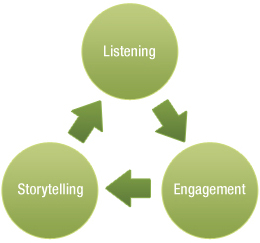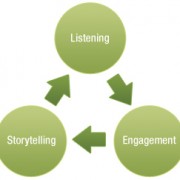The "Fifth" P of Marketing
Marketing 101 teaches us that acute marketing decisions should take into four main aspects into consideration: Product, Price, Place and Promotion (4 P’s). However, what Marketing 101 does not teach is the importance of the 5th P of marketing.
I would divide the “Fifth” marketing P into two halves that are of equal importance: People (listen) then Participation (engage). Assuming that your passive one-way communication model will be enough for you to be a successful marketer is the easiest road to failure. Web 2.0’s social media services have helped businesses reach out to consumers and encourage brand loyalty through an active two-way relationship.
To conqeur the 5th P, marketers should take the following steps:

– Step one is to listen to the customers for which you have to monitor all talk that is generated about your company. Listening to your target marketing and monitoring conversations that are related to your brand will help you understand your customers’ behavioral patterns and your customers’ perception of your brand.
– Step two is to engage in the conversations. This can be done by participating in existing blogs (commenting), tweeting and retweeting (Twitter), sending e-mails, creating chat rooms on your website where customers can talk to you about their problems, and even by allowing customers to post testimonials about your brand and company. Participation means allowing the customer to have a say in the company’s actions, making sure that they are involved in the entire brand loyalty process, rather than being led by the company. The goal of your participation should be convincing your customers that you are interested in their welfare.
Adding the 5th P to a brand’s marketing mix could play a key role in your brand’s success. Build the right community around your brand, be honest with your customers and give them the tools to create and share right alongside you.



 Businesses, content publishers media channels have been pushing for blog creation as a way of engaging existing and reaching new readers. With 133 million blog posts submitted on
Businesses, content publishers media channels have been pushing for blog creation as a way of engaging existing and reaching new readers. With 133 million blog posts submitted on